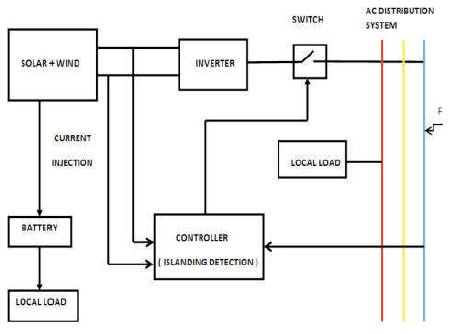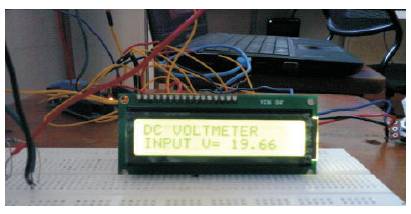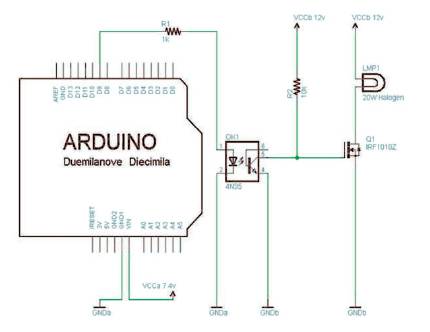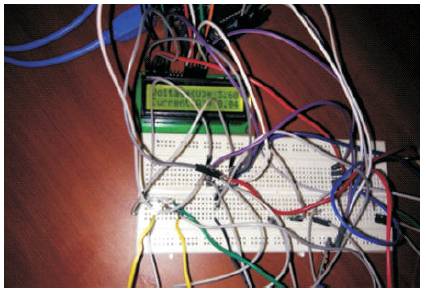
Figure 1. Distributed Electrical Generation Systems
This paper proposes renewable energy system interface with AC distribution system. AC grid interaction improves the efficiency of the system and reduces the power demand. In this paper, issues on renewable system interfaces with AC system are analyzed theoretically. In addition, this paper proposes a protective scheme for islanding detection. In current scenario islanding condition is dangerous for grid operators who were not aware of the power from the distributed generation supplying load still connected even though there is no power from the grid. For this reason, islanding condition must be detected and immediately stopped from producing power. For that aspects, this work proposed a new current injection control technique using microcontroller to detect the islanding condition and provide human safety and equipment protection.
The Distributed Generation (DG) has been gaining more importance due to the diffusion rate of increasing their reliability and feasibility that has improved through technology advancements. Due to these reasons the research on optimization of the conventional power system by making use of power electronics converters is extensively spreading out. AC can be easily stepped up and stepped down for long transmission with reasonably minimum loss. The main benefits of AC is that the voltage level can be transformed easily using transformer from one voltage to another depending upon the voltage level of the transmission level. The transmission losses in AC are way much lesser than DC. In AC, the current travels along the boundary of the wire, whereas DC current flows across the cross section of wire, which increases heat generated and hence the loss. For these reasons, AC power is generally preferred for transmission, to very high voltage and transmitted over long distances with minimum power loss. This makes it possible to produce electricity and interference with AC system. The needs of DG systems are protection, reliability, effective operation, and high power quality. So that, nowadays DG system uses renewable energy sources such as Wind Power, Solar Photovoltaic, Micro-hydro, etc. In recents days, the conventional energy resources are becoming more important due to increasing cost, depleting of petroleum products, and finally causing seroius environmental polllution. The demand of energy is increasing with the increase in population. To compensate this increasing demand DG systems are incorporated into the power system to form a new type of power system, such as smart grid, micro grid, captive power plant, etc. The power generated in this small distributed generators are connected to the centralized grid depending upon the voltage level or it may operate independently. The main advantage of DG system is that it reduces the blackouts, which affects the power grids. There are large number of independent electric grids that are used to feed loads in remote areas. Compared to traditional centralized power system the hybrid systems tender better performance, flexibility in planning, and environmental benefits.
Remote areas provide a big challenge to electric power utilities. Here, the authors are discussing about the emerging renewable energy grid integrated wind-PV hybrid system with maximum power extraction. Islanding is the condition in which DG system continues to supply power to local loads even if there is any fault in the grid. Islanding identification is an important issue for a distribution network. Adverse effects of islanding are low power quality, islanded grid cannot effectively control its frequency and voltage, grid protection interference equipment damage, and personnel safety hazards. Due to these reasons, the DG system must detect an islanding condition, for the protection of system, there are chalanges in implementation. This paper presents a new anti-islanding scheme for AC-interfaced hybrid generation systems that detects the island and disconnects the hybrid system from the centralized AC distribution grid. Depending on the system structure and operation principle, the technique can be utilized for system protection.
Distributed Generation (DG) is expanding as a new system model to produce highly reliable and good quality of power (Liu et al., 2007 ). This DG concept is implemented mainly by inserting different types of renewable energy resources, such as photovoltaic (PV) panels, fuel cells (FCs), Micro trubine, Mini hydro power plant, and wind turbines. These different kinds of DG systems allow for the integration of renewable and nonconventional energy resources in a common grid. The simple distributed electrical generation system in Figure 1 show how different renweable energy system is intergrated with the common bus. Hence, the DG is becoming a division of power system in most countries to compromise present challenges associated with energy management. Now-a- days, electrical energy have to face a new situation in which small distributed power generators and disseminated energy storage devices have to be incorporated together into the grid (Kim et al., 2011 ). The grid will supply power from suppliers to consumers using digital technology to control appliances at end user in order to save energy and cost and increase the security.

Figure 1. Distributed Electrical Generation Systems
The concept behind this is you would mind your appliance periodically this in turn charge you the use during peak hours and avoid high power consuming devices of late afternoon and early evening. In this method, the expected energy management system is possible with more communicative, creative, and distributive power system. Using DG of energy balance is possible and optimistic energy saving and clean environment is achieved. The paper covers the application of more number of renewable energy system, such as hydrogen generation systems, Fuel Cell technology, especially wind and solar into the grid. The advancement in power electronics make use of power conversion as coupling between main grid source and other DGs. Then, the operation of control for these electrical interfaces by using higher digital devices will be enabled inspected for effective operation of the Mirco and Smart grid.
The simple AC distribution system shown in Figure 2 illustrates that all the incoming and outgoing power in this distribution system AC, i.e., AC is the common.

Figure 2. AC Distribution System
AC power generation and distribution is easy due to some drawback associated in the DC distribution system, such as commutation, step up and step down of power depending upon the power utilities in transmission and utilization (Bakhshi et al., 2013). Apart from the above mentioned problems there are other certain problems like generator set up, maintenance of machine particularly commutator and brushed, and some limition in DC switches and circuit breakers due to arcing. So the system makes complex and costly. In AC geneation there is no contact therefore the wear and tear loss, also the transformation of power using transformers is possible with minimum losses in transmission and distribution. AC circuit breakers are economical than DC circuit breakers due to less repairing and maintenance (Alam et al., 2014).
The AC distribution system rating is mentioned in the Table 1, which is evaluated in the simulation. Here the system power rating, voltage, and current rating is considered low value for the implementation of prototype also.

Table 1. Parameters of AC Distribution System
Design calculation for AC Grid:
By using the formula P =V I; I =P/V
By Ohm's law V = I R; R =V/I
According to the IEEE Standards 1547
Islanding is referred as the condition in which a Distributed Generator (DG) continues to power a location even through electrical grid power from the electric utility is no longer present. Islanding can be dangerous to utility workers, who may not realize that a circuit is still powered to grid as well as the load (Bifaretti et al., 2015 ). For that reason, distributed generators must detect islanding condition and immediately stop producing power, which is referred to as “Protection scheme for islanding”.
In case of a shutdown, the DG will continue to deliver power “as long as there is sufficient sources”. It is used as a Power Backup. If the load exceeds its maximum rated value, then DG should stop powering to the load. This is also referred to as Islanding. The proposed islanding algorithm is based on “current injection technique” (Bejmert and Sidhu, 2014). If the fluctuation caused by injected current exceeds a normal value, switch will be opened which creates positive feedback. Figure 3 shows the switch is closed in normal mode indicating that there is no fault to do islanding and Figure 4 shows that the switch is opened for the fault to protect the healthy system from the faulty system by doing isolation.

Figure 3. Normal Condition

Figure 4. Islanding Condition
The solar cell is a current source which generates the load current IL in closed path. The current will flows in the reverse direction, due to potential between the negative and positive terminals. The series solar cell resistance (Rs) is not a perfect conductor. The shunt resistance (Rsh) is due to leakage of current from one terminal to the other terminal. In an ideal solar cell, Rs = 0 and Rsh = ∞ . The simple PV equivalent circuit is shown in Figure 5.

Figure 5. Simple Equivalent Circuit of PV Cell
The characteristic equation of Photovoltaic cell is,

where,
I = Output current of PV panel (A)
IL = Load current generated by PV cell (A)
ID = Diode current (A)
Ish= Leakage current through shunt resistor (A)
Rs = Series Resistance (R)
Q = Electron charge (1.6 x 10-19 C)
K = Boltzmann's constant (1.381 x 10-23 J/K)
T = Junction temperature (K)
N = Diode ideality factor (1~2)
The PV cell power is,

where, V = PV panel output voltage
I = PV panel output current
Panel Model: MS24250 SPV Module 24 V, 1 KW
Power Rating of Solar PV panel:
By using the Power formula,

The rating of PV module is calculated and shown in Table 2.

Table 2. Rating of 1KW Solar Pannel
Wind Module: 12 V, 100 W
Power rating of Wind Turbine:
By using the Power formula P =V I; I =P/V
The rating of Wind Turbine is calculated in Table 3.

Table 3. Rating of Wind Module
With the above mentioned rating a hybrid system using solar and wind is designed using the Matlab simulink simulation and its output waveform is shown in Figures 6 and 7, respectively. This hybrid system generates the output voltage about 24 V, which is the designed parameter.

Figure 6. Simulation of Hybrid Circuit

Figure 7. Output Waveform
The block diagram and hardware implementaion of the proposed technique and its techniques for execution done (Paul et al., 2016 ) is shown in Figures 8, 10, and 11.

Figure 8. Block Diagram for Hardware Implementation

Figure 10. Flow Chart for the Controller Operation

Figure 11. Hardware Setup for Open Loop Implementation (Voltage Sense)
In a closed loop implementation circuit, current from the current sensor is sensed and is given to the controller ATMEGA 328P to control the Power Mosfet IRF1010Z. This connection in pin diagram is shown in Figure 9. The system can detect islanding by implementing Anti-Islanding scheme.

Figure 9. Controller Circuit Design Using Arduino ATMEGA 328P
In closed loop circuit, the system determines the value of the voltage and current from the Hybrid system. If the values of voltage and current is under the preset value then there is anti-islanding, this ensures the supply from the grid. If the value of the drops down and the value of the current increases then the controller identifies the islanding and opens the switch and cause islanding to protect the healthy system from the grid in order to protect the DS from overloading and damaging. The operation flow is illustrated as a flow chart in the Figure 10.
The hardware result setup for open loop circuit voltage and current sense is shown in Figures 11 and 12, respectively. From the operation, can obtain the open source voltage from the Hybrid system and it is found to be 19.66 V and the simulation output voltage is 23.89 V as shown from the scope of simulation in Figure 7, with the voltage difference of 4.23 V which is the difference between theoretical and practical values also due to variation in mathematical modelling and practical compositions.

Figure 12. Hardware Setup for Current Sense (Islanded)
In this paper, a hybrid source interface concept for AC distribution has been proposed. Also, AC distribution systems achieve high efficiency. Islanding detection is a key requirement for AC distribution systems to ensure safety and protection. A protection technique has been proposed for AC systems. Based on mathematical analysis, the algorithm perturbation factor, duration, and frequency parameters can be designed to guarantee detection time and maintain high MPPT efficiency. Here, a protection technique called current injection method was implemented. In a current injection technique by using current sensor the value of current is sensed and using voltage sensor the value of voltage is sensed. At last the proposed AC algorithm detects the island condition, isolates the grid from the supply, and maintains the system protection. A prototype converter for hybrid modules was implemented with a Arduino controller. Its experimental results have verified the feasibility of the converter. In addition, the experimental results have shown that the protection technique for AC distribution system.